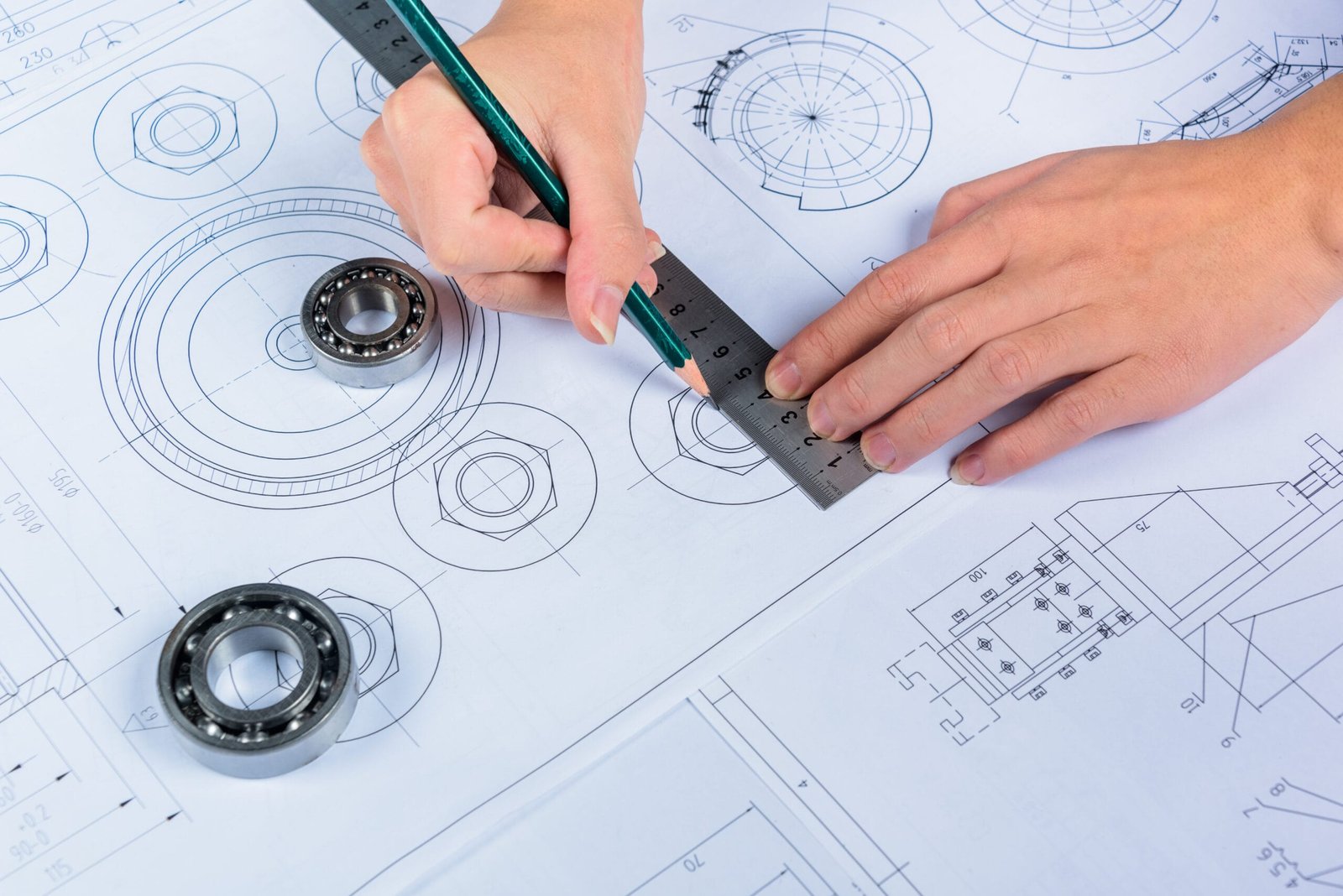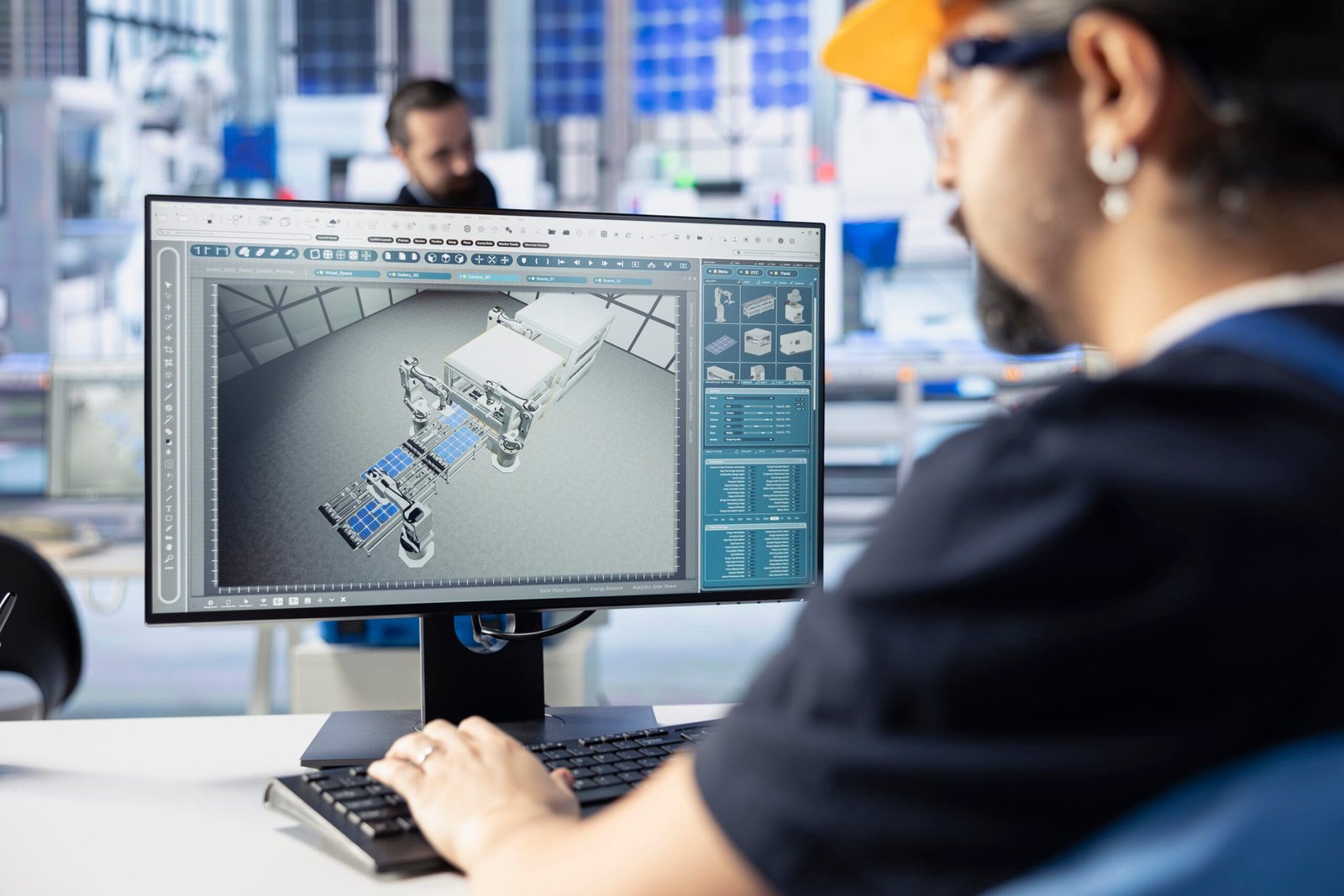Description:
Explore how AutoCAD 3D rendering enhances design precision, visualization, and client communication for DesignHok’s mechanical and architectural projects. Learn about its advantages, process, and why it’s a game-changer in modern design workflows.
In the world of digital design, AutoCAD 3D rendering stands as a transformative tool that bridges imagination and reality. At DesignHok, where excellence in mechanical design, 3D modeling, 2D drafting, and rendering services converge, AutoCAD 3D rendering plays a crucial role in bringing ideas to life. Whether it’s mechanical components, architectural layouts, or industrial systems, DesignHok utilizes the power of AutoCAD’s advanced rendering features to produce realistic and detailed visualizations for clients across various industries.
What is AutoCAD 3D Rendering?
AutoCAD 3D rendering is the process of converting 3D models into realistic images or animations using light, shadows, materials, and textures. It adds depth and realism to otherwise flat or abstract CAD models. This technique is especially valuable in architecture, engineering, manufacturing, and mechanical design.
Unlike basic 2D drafting or conceptual modeling, rendering offers a detailed view of how a design will appear in the real world. It communicates design intent clearly, eliminates ambiguity, and helps identify potential flaws before the actual production or construction begins.
Why DesignHok Uses AutoCAD 3D Rendering
At DesignHok, quality design and client satisfaction are top priorities. AutoCAD 3D rendering aligns perfectly with these values by providing the following advantages:
1. Visual Clarity
Instead of interpreting complex 2D schematics or wireframe models, clients receive lifelike representations of their projects. This is particularly helpful for stakeholders with non-technical backgrounds who may struggle with traditional CAD drawings.
2. Enhanced Design Accuracy
AutoCAD enables the integration of exact dimensions, real-world materials, and physical lighting effects. This ensures that the rendering is not just beautiful but also functionally precise, reducing errors in production.
3. Faster Decision Making
By offering visual context, 3D renders simplify design reviews and speed up client approvals. With realistic previews, clients can request changes early in the process—saving time and cost in the long run.
4. Marketing and Presentation
Renderings created in AutoCAD can be used in proposals, presentations, brochures, or websites. High-quality visuals attract clients and convey professionalism, which is essential for building trust in competitive industries.

The AutoCAD 3D Rendering Workflow at DesignHok
DesignHok follows a streamlined workflow that ensures high-quality results for every project:
Step 1: Conceptual Design
The process begins with idea generation. Designers collaborate with clients to understand their needs, gather reference materials, and outline project specifications.
Step 2: 3D Modeling in AutoCAD
Using AutoCAD’s powerful 3D modeling tools, DesignHok engineers create precise models that serve as the foundation for rendering. Every detail—from curves and holes to surfaces and threads—is modeled with precision.
Step 3: Material Application
Next, materials and textures are applied to the model. AutoCAD allows designers to assign reflective surfaces like metal or transparent materials like glass, giving each component a realistic look.
Step 4: Lighting and Scene Setup
Lighting is crucial for an effective render. DesignHok uses natural, ambient, and artificial light sources to replicate real-world conditions. Shadows, highlights, and reflections are adjusted for optimal realism.
Step 5: Rendering and Refinement
After all the settings are fine-tuned, the final rendering is generated. This can take anywhere from minutes to hours, depending on the complexity of the model. Once complete, the images are reviewed, edited if necessary, and shared with the client.
Applications of AutoCAD 3D Rendering at DesignHok
AutoCAD 3D rendering is applied across all areas of DesignHok’s services:
- Mechanical Design Projects: Detailed renderings of machine parts, assemblies, and mechanical systems improve communication between engineers, fabricators, and clients.
- 3D Modeling Projects: 3D renderings enhance visualization and ensure the final model meets aesthetic and functional expectations.
- 2D Drafting & Engineering: Even 2D designs can be elevated with 3D renderings to provide an additional layer of clarity and realism.
- 3D Rendering Services: As a standalone offering, DesignHok produces high-quality visual assets for architectural, industrial, and mechanical presentations.
The DesignHok Advantage
Choosing DesignHok for AutoCAD 3D rendering services means collaborating with a team of highly skilled designers and engineers who understand both the creative and technical aspects of rendering. Our team not only produces visually stunning renders but also ensures that each design is feasible, functional, and aligned with the client’s goals.
Here are a few ways DesignHok stands out:
- Customized Render Solutions: Each render is tailored to the unique needs of the project.
- Quick Turnaround Time: Our workflow is optimized for efficiency without sacrificing quality.
- Cross-Industry Expertise: From architectural visualization to mechanical part rendering, we offer solutions for a wide range of industries.
- Collaborative Communication: Clients are engaged at every stage to ensure the final output aligns with their vision.
Future of 3D Rendering with AutoCAD
As AutoCAD continues to evolve, its 3D rendering capabilities are expected to become even more advanced, incorporating features such as AI-assisted modeling, real-time rendering, and augmented reality previews. DesignHok is committed to staying at the forefront of these innovations to offer clients cutting-edge design visualization services.
Conclusion
AutoCAD 3D rendering is not just a visualization tool—it is a bridge between concept and reality. For DesignHok, it enhances precision, supports communication, and improves the overall quality of design projects. By integrating rendering into our workflow, we help clients visualize their dreams with confidence and clarity.
Whether you’re launching a new product, designing an industrial plant, or visualizing a mechanical system, DesignHok’s AutoCAD 3D rendering services provide the clarity and detail needed to bring your vision to life.
Frequently Asked Questions (FAQ)
Q1: What types of projects benefit from AutoCAD 3D rendering at DesignHok?
A: AutoCAD 3D rendering is ideal for mechanical parts, architectural designs, industrial systems, and any project that requires visual accuracy and realistic representation.
Q2: How long does a 3D rendering project take at DesignHok?
A: Project timelines vary based on complexity, but most rendering tasks can be completed within a few days. DesignHok ensures timely delivery without compromising quality.
Q3: Can I request changes after receiving a 3D render?
A: Yes. DesignHok values client feedback and allows for revisions to ensure the final render meets your expectations.
Q4: What file formats are supported for renders?
A: Renders can be delivered in various formats such as JPEG, PNG, TIFF, and even video formats for animated walkthroughs if needed.
Q5: Do I need 2D drawings before creating a 3D render?
A: While not always necessary, 2D drawings help provide reference dimensions and design intent, making the modeling and rendering process more accurate.




